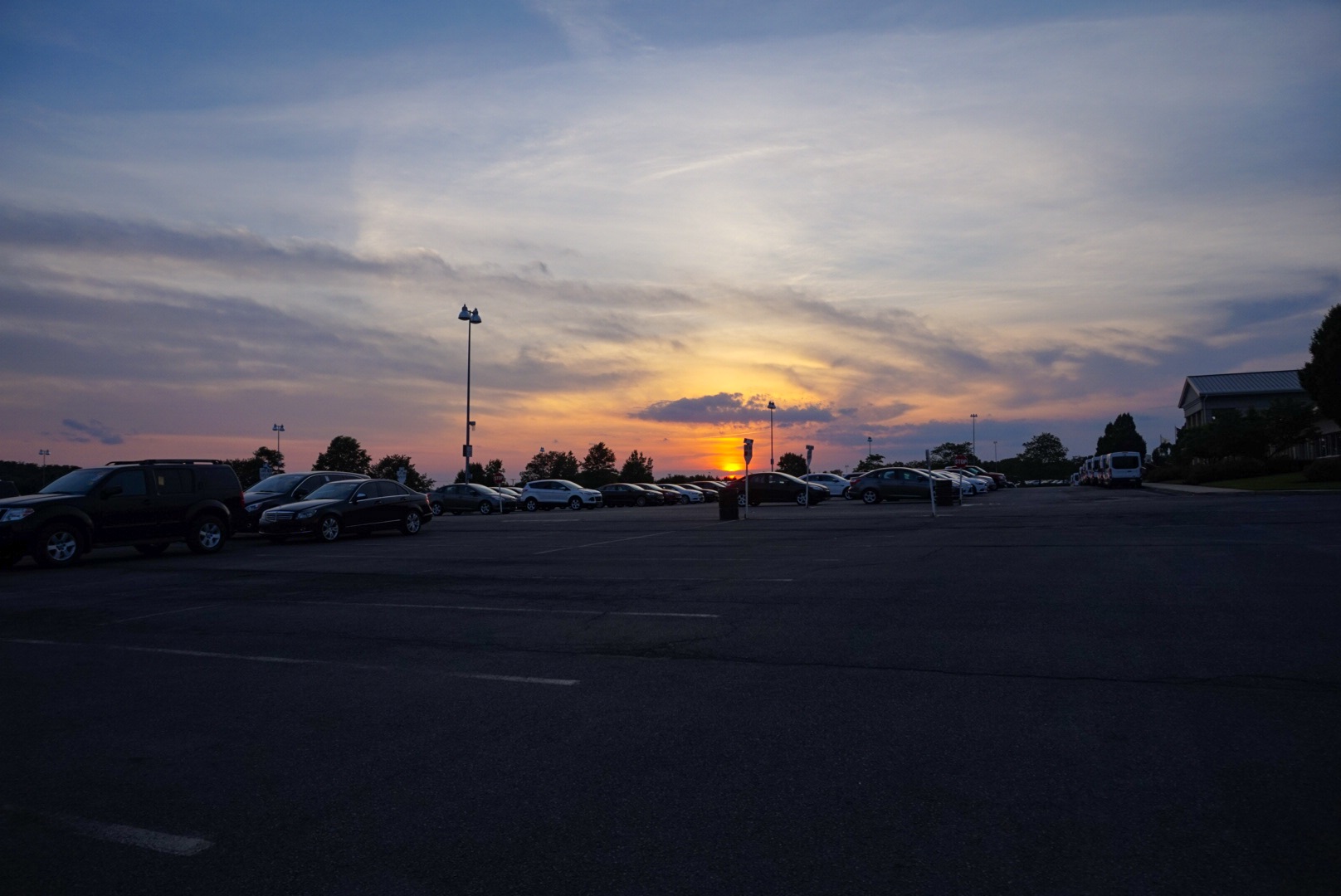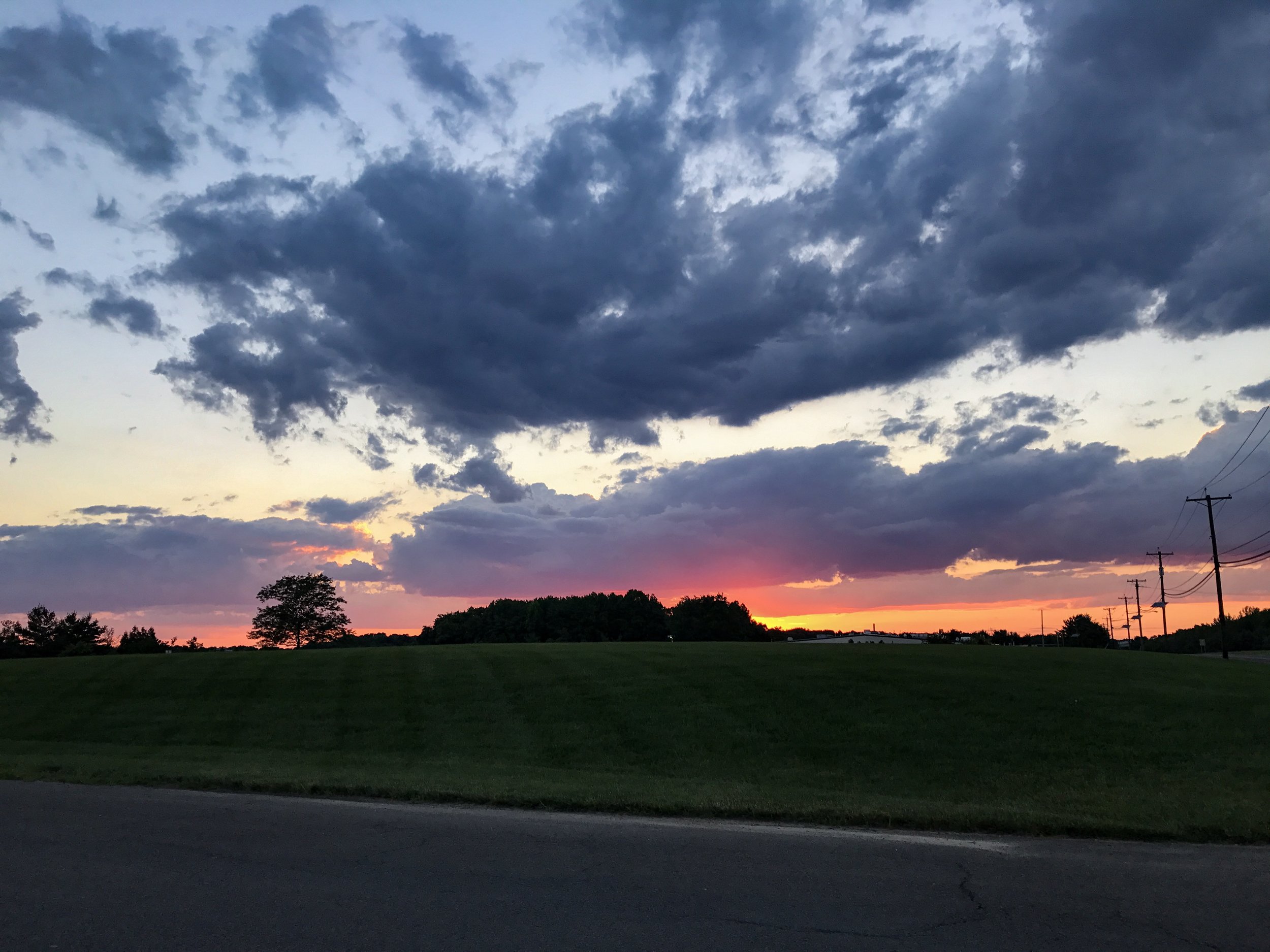I had issues getting this to post on the correct day sorry about that. This sunset was taken with the Sony A5000 instead of the iPhone. I have only really used the A5000 to do time lapse and video so I wanted to see how it handled photos.
I had issues getting this to post on the correct day sorry about that. This sunset was taken with the Sony A5000 instead of the iPhone. I have only really used the A5000 to do time lapse and video so I wanted to see how it handled photos.



Here is today's iPhone 7 Plus sunset photos. Editing don't in Lightroom Mobile.
There will probably be no shots tomorrow due to where I will be working.



Here is today's iPhone 7 Plus sunset photos. Editing don't in Lightroom Mobile.



So while at my job I see some really beautiful sunsets. The only downside is that I can not have my good cameras here to take pictures.
So I have decided why not use my IPhone 7 Plus and get some shots. Why not? It would be ashame not to take any pictures at all.
Here are a couple of shots from tonight. I edited these with Lightroom Mobile.


Last week I posted an article about the Worst Photo Purchases I Have Made so now for one about the best purchases I have made.
Read MoreI am sure we all have at one time or another made a purchase we late regretted. I know myself have made a few of them over the years.
Read MoreI decided to start playing around with snapchat again. I want to do more when I am out taking photos or hiking. This was an attempt at a snapchat story that I did while hiking at the Nature Center.
Let me know what you think and you can follow me on snapchat at bigalsphoto.
From my other blog http://www.thephotographytipsblog.com/dslr-vs-mirrorless-vs-micro-43-cameras/
In this article, we are going to briefly go over DSLR vs. Mirrorless vs. Micro Four Thirds Cameras. We will go over some the differences with each of them. Here are some links to some cameras of each type DSLR, Mirrorless, Micro four thirds.
A common DSLR is different than the Mirrorless and Micro four thirds cameras due to it having a mirror inside (See image below). The reason DSLR's have mirrors is to reflect what the lens is seeing up to the viewfinder that you are looking through. When you take a picture the mirror flips up and exposes the sensor that catches the image. One of the issues with a mirror is that it can cause camera shake from the mirror flipping up that could possibly make the picture blurry (see video at the end of the post to see the mirror slap). I own two DLSR's the Nikon D800 and Nikon D5200. Both are great cameras and the D800 is my workhorse.
Nikon D800 Mirror
Mirrorless cameras are just that, mirrorless. Unlike the DSLR they do not have a mirror inside the camera which eliminates the mirror slap and makes the camera much quieter. The only issue with no mirror is that it has nothing to reflect what your lens sees to your eye. This is why you see most mirrorless cameras without the viewfinder. You can find some with the viewfinder though they usually cost more. The upside is that it seems that people want viewfinders on mirrorless cameras so companies are putting out more with viewfinders like the Sony A6300.
The downside with the viewfinders is it is digital. They are awesome and I love them but they do eat batteries. Though the ones without the viewfinders also do that since you have to use the screen on the back to see what you are taking a picture of.
Another issue is if you get a mirrorless camera that has interchangeable lenses there are not many options at the moment compared to DSLR cameras. I own the Sony A7R with only one lens at the moment the 50mm f/1.8 FE. I hope to get some more lenses later and be able to make this one of my main cameras.
Sony A7R Sensor
Micro Four Thirds are cameras with a really small sensor. The image sizes are smaller than a DSLR or Mirrorless camera but still come out looking great. Some of the best (IMO) companies making Micro Four Thirds are FujiFilm and Olympus. I personally own an Olympus Pen E-P1 and love it. I do not use it as much as I use to, though, but I always have it on standby. Most Micro Four Thirds cameras are smaller than both the DSLR and Mirrorless which make it nice for travel of family gatherings. Some of the Fuji cameras also have a retro style like the Fujifilm X-T10 giving it an old film camera look.
The battery life is usually pretty decent at least it is on my Olympus Pen E-P1. Also, it has interchangeable lenses, though not a ton of options, but still not bad.
Olympus Pen E-P1 Sensor
This is a quick video I made showing a DSLR, Mirrorless, and Micro Four Thirds shutters in action.
If I missed anything that you think I should have added please leave a comment and let me know!
A prime lens has a fixed focal length. The common ones are 24mm, 35mm, 50mm, 85mm. There are also some longer ones like 300mm and higher. Primes are usually sharper than a zoom due to less moving parts. Another advantage to a prime is the aperture. Where "professional" glass is normally a f/2.8, a prime can go wide open to f/1.8 or even lower f/1.4.
I personally own the Nikon 50mm f/1.8 which was my first full frame lens, I love it and it has a home in my camera bag at all times. I also just bought a Sony A7R and the only lens I have for it at the moment is a 50mm f/1.8 and it's pretty awesome too.
Read More